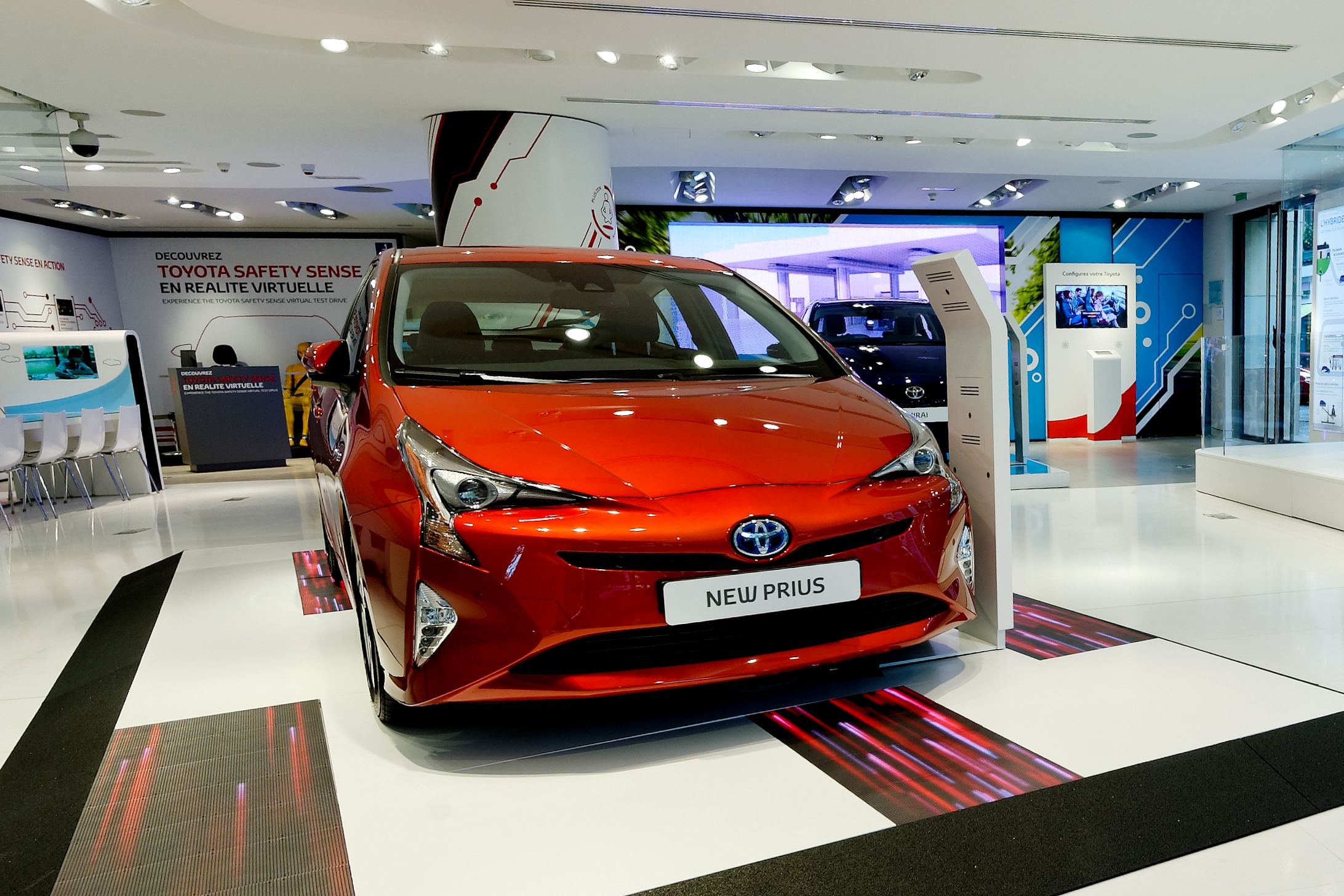‘Thanks to the TNGA platform, we could bring down the height of the Prius’ roof, body and hood, achieving better aerodynamic performance without sacrificing headroom inside the car.’
The fourth-generation Prius shown at the Auto Expo 2016 is the next milestone in the history of Toyota’s hybrid power technology. Kouji Toyoshima, chief engineer, Toyota, reveals what went into developing the latest Prius.
The introduction of the all-new, fourth-generation Prius is the next milestone in the history of Toyota’s hybrid power technology. Kouji Toyoshima, chief engineer, Toyota Motor Corporation, reveals what went into developing the latest Prius.
What did you want to achieve with the new Prius and how did you go about making it different from previous generations of the model?
The Prius has always been an ecological car, right from the start. That meant we knew it was important for the new model to maintain its role as an eco-leader, even though it faces more competition, from other hybrids and alternatives like electric vehicles. At the same time, we knew it had to create an emotional response, with an exterior design that is inspiring, passionate, perhaps even sexy. From the customer’s point of view it had to be fun to see, touch and drive.
We wanted to achieve a metamorphosis, a beautiful transformation. The new model has the same eco-DNA as its predecessors, but it is an even better car. And certainly we wanted it to be fun to drive, making sure it provided the waku-doki (exciting) sensation that’s an important aspect of modern Toyotas.
This really is an ‘all-new’ car. What kind of challenges did that present?
The project has taken us several years to complete with an all-new platform, exterior styling and ‘Iconic Human-tech’ cabin, and a re-engineered, optimised powertrain. We invested a huge amount of care and consideration into what we did, all the time keeping in mind the smiles we wanted to see on customers’ faces.
The first challenge was to keep the new car’s weight in check, so I gave the team the go-ahead to think about how and where we could reduce vehicle weight from scratch. We also had the pressure of this being our first model to use a TNGA platform and the need to live up to the Prius’ reputation for always delivering better fuel economy and emissions with each new generation.
The improvements in efficiency are greater than ever. How was that made possible?
Like world record-holder Usain Bolt, it’s hard to find another one-tenth of a second or, in our case, one-tenth of a litre. Success comes by challenging everything you do and by striving continuously to make even the smallest improvements, because they all add up.
Take the gasoline (petrol) engine for example. Outwardly it seems it hasn’t changed, with the same capacity and basic design, but in fact we have taken its performance to a much a higher level, with much better combustion and multiple, detailed measures that reduce its internal friction and give better heat management. With this level of scrutiny we have in fact made it the most thermally efficient in the world. Simply put, you get more power from every drop of fuel.
We paid the same close attention to all the other major elements in the hybrid system – the transmission, the electric motors and the hybrid battery. We reduced weight everywhere, it is as though they have all been put on a diet. We have managed to make things smaller as well, which let us improve the packaging, so we could relocate some items, such as the hybrid battery, saving space and helping lower the car’s centre of gravity.
The hybrid battery is an interesting example of how we have been able to improve performance. Like before, it uses nickel-metal hydride technology, which we know suits the Prius’ global market needs, but we’ve made it more compact, yet at the same time more powerful, faster charging and longer lasting.

What factors determined the radical new look of Prius?
We focused just as much on the exterior design as we did on the powertrain when it came to improving the new Prius’ efficiency. We needed to come up with a design that delivers excellent aerodynamics, as well as great looks.
Our guiding concept for this was to ‘fold in the wind’, calculating how we could control air flow by effectively wrapping the car in a single veil of air. Our work was made easier thanks to a new wind tunnel which let us measure the airflow while the vehicle was actually moving. We produced model after model with millimetre-adjustments until we came up with the perfect body. We also had the benefit of the TNGA platform, which meant we could bring down the height of the roof, body and hood, achieving better aerodynamic performance without sacrificing headroom inside the car.
We had a young group of designers working on the car’s exterior and they were committed to producing something really new. The new Prius is futuristic, but still retains some elements of being influenced by living things, so it manages to combine being a machine with having an emotional dimension.
(Interview courtesy Toyota)
RELATED ARTICLES
'India Can Become a Major Pillar for Us' - Marquardt Group
Björn Twiehaus, CEO of Marquardt Group, and Vishal Narvekar, the company's India GM, share their outlook on the Indian m...
Luxury Car Market to Slow in 2025: Mercedes-Benz Sees Flattish Numbers
In Jan to March of 2025, the market may witness its slowest growth since COVID-19, and if the weakness continues, the se...
‘We Must Have More Women Leaders in the Auto Sector:’ Anjali Rattan
The chairperson of the New Delhi-headquartered RattanIndia Enterprises believes that with their multi-tasking nature, wo...






 By Autocar Professional Bureau
By Autocar Professional Bureau
 09 Feb 2016
09 Feb 2016
 6689 Views
6689 Views





 Darshan Nakhwa
Darshan Nakhwa




